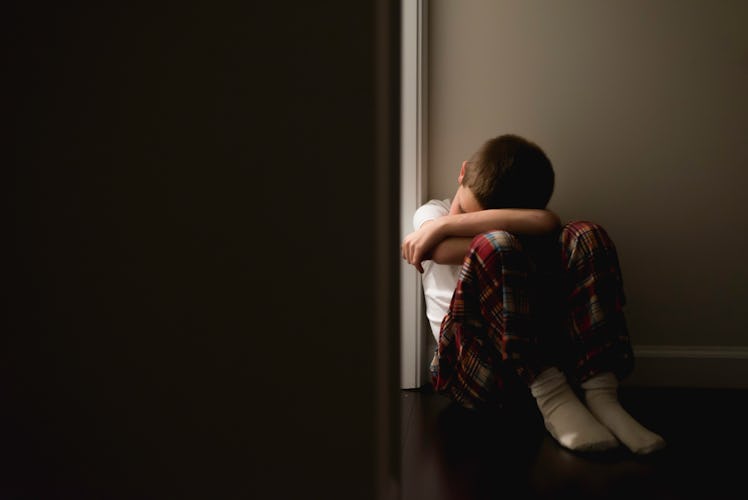Why Do Kids Self Harm? What Parents Need To Know.
Self-harm is common and not always a big red flag — but how parents react to it can make all the difference.

Self-harm is surprisingly common in kids. About 17% percent of teens report that they have engaged in self-harm at least once. And although it’s more common in adolescents, younger kids may self-injure too; 1.3% of children aged 5 to 10 self-harm. That can be terrifying for parents. No one wants to see their child hurt — especially not by themself. But it’s crucial not to let this fear creep into your response to your child’s behaviors — and to understand why they’re doing it.
To a parent, self-harm can look a lot like a suicide attempt, says Janis Whitlock, Ph.D., founder and director of the Cornell Research Program on Self-Injury and Recovery. But in fact, most teens actually use self-harm as a coping mechanism.
“The dominant reason people report using it is to manage emotion — either emotions that feel too big, or not feeling any emotion at all,” says Whitlock. Although it may seem counterintuitive, for these teens, physical pain may help offset emotional pain that they otherwise feel unable to handle, she says.
Self-harm behaviors can include cutting, scratching, burning, or intentionally hitting the head or body against an object. Although these injuries are often superficial, they can be severe enough to result in hospitalization. Self-harm isn’t performed with suicidal intent, but it does signal that someone is experiencing high levels of distress, and it’s a significant risk factor for future suicide attempts.
Who Is At Risk Of Self-Harm?
Some teens may be more likely to engage in self-harm than others. “The risk factors for self-injury are often the risk factors that we see for any mental health challenge — history of trauma or abuse, or just chronic stress,” Whitlock says.
Teens with ADHD, anxiety, depression, or eating disorders are also more likely to self-injure, Whitlock says. Being bullied or feeling disconnected from peers or family may also play a role in a teen’s likelihood of engaging in these behaviors, she adds.
In general, girls are more likely to self-injure than boys, although research has also found that risk is increased for autistic boys.
What Parents Can Do About Self-harm
Finding out — or even suspecting — that their child is self-harming can be very emotional for parents. It’s normal to feel fear or even anger, Whitlock says, but parents should try their best not to bring these emotions into conversations with their child.
“People who self-injure are typically very perceptive about emotion,” she says. “So, I really recommend that parents do whatever work they need to do just to be calm, or at least dispassionate, and to be authentically curious with their child — not ready with a whole bunch of stuff that they want to say.”
Whitlock recommends using “I” statements and observations, not accusations. For example, a parent could state the behaviors they’ve noticed, then ask their child if they are self-harming. It’s important to make the child feel like the parent is coming from a place of love and concern, not anger or judgment.
“Try to avoid anything that's going to make the child feel like they've been seen in a negative light by their parent, or that the parent has already pre-judged them and already decided what happens next,” says Whitlock. “Nobody wants to feel like they’ve already gotten judged before they've even had a chance to say anything.”
If your child is self-harming, you don’t have to solve the issue right away. “The primary goal of early conversations is to show support and establish connection,” Whitlock says. “Jumping right into other coping mechanisms can feel patronizing at times. So the best strategy early on is to listen and share and explore needs and supports, like therapy.”
If your child is self-harming, there are many online resources to learn more about how to help them, including Cornell’s Self-Injury and Recovery Resources website and the Self-injury Outreach and Support. It’s also important that parents have some form of support, whether that be a therapist or trusted friends they can confide in.
Overall, it’s important to leave the door open and continue to have conversations with your child. Whitlock says the overarching message of these conversations should be: “I love you. I don't want you to suffer. I want to help you. We can work on this together.”
If you or someone you know is experiencing suicidal thoughts, call the National Suicide Prevention Hotline at 1-800-273-8255 or text HOME to the Crisis Text Line at 741741. You can also reach out to the Trans Lifeline at 1-877-565-8860, the Trevor Lifeline at 1-866-488-7386, or to your local suicide crisis center.
This article was originally published on